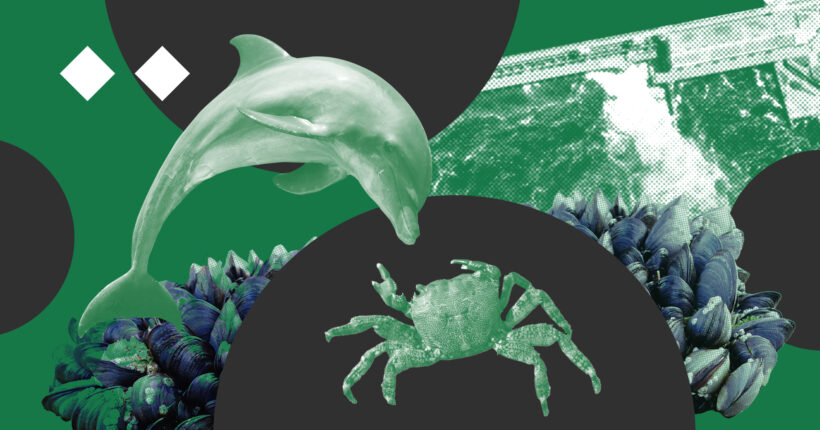
What is the problem?
On June 6, 2022, Russian occupation forces carried out a terrorist attack by detonating the Kakhovka HPP Dam. The resulting flood covered an area of nearly 140 km². The rushing waters swept away houses, septic tanks, landfills, sewage systems, storage facilities containing agricultural chemicals, HPP equipment, gas stations, and sediment from the Kakhovka reservoir, eventually reaching the Black Sea.
Right after the disaster, the predictions were dire. Other than a brief period of desalination in the Black Sea, which actually happened for a short time, by early July, the water's salinity had returned to normal levels, though at the lowest point of 12-13 ppm. Scientists forecasted that the Black Sea would be impacted by pollutants introduced along with the influx of water, affecting various levels of living organisms ranging from plankton to cetaceans. The high amount of polluted freshwater and warm summer temperatures could potentially trigger the rapid growth of microorganisms and algae, resulting in a harmful water bloom.
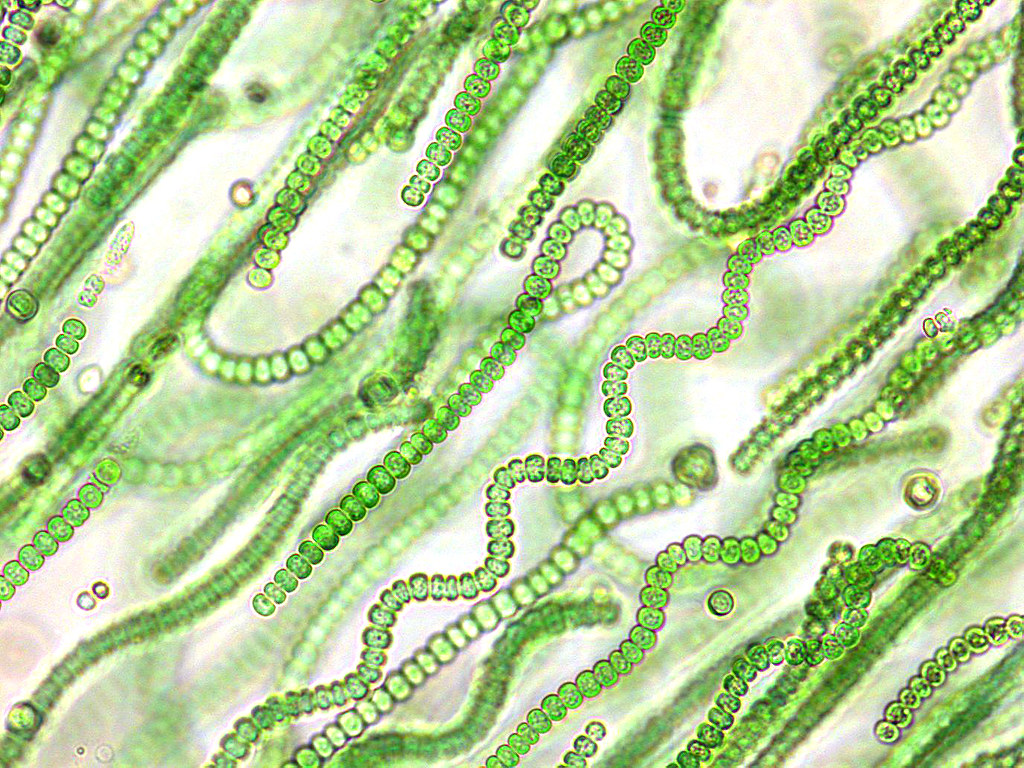
Cyanobacteria, also known as blue-green algae, thrive by consuming organic material and can cause the blooming of bodies of water. These bacteria are responsible for giving water a greenish hue. Photo credit: Cyano CBF.These predictions have been proven right. In July, over 1,500 square kilometers of the sea near Odesa were overtaken by perilous, poisonous blue-green algae. While water blooms are a yearly occurrence, this year's was significantly more intense than the previous year.
Based on information from Viktor Komorin, the director of the Ukrainian Scientific Center for Marine Ecology (UkrNTSEM), the employees of the Center discovered from the collected water samples that the pollution following the disaster was extensive. The samples revealed significantly elevated levels of heavy metals such as copper and zinc and dangerous substances like arsenic and toxic and carcinogenic chlorine compounds. In September, Komorin commented that although the water quality has improved since then, the toxins have not disappeared completely; they have settled at the bottom. As a result, the lower parts of the Dnipro River are still heavily contaminated.
Once more, dolphins are perishing, but we cannot attribute it solely to the explosion at the hydroelectric power plant
As stated by the Ukrainian Scientific Center of Marine Ecology, there have been reports of dolphin deaths in the Black Sea following the explosion of the Kakhovka HPP. The center explained that during the spring and summer of 2022, there was an unusually high mortality rate among cetaceans, specifically the porpoise and common dolphin, in the western part of the Black Sea. This was not observed in 2023, but in June and July, dead cetaceans were found in Odesa and south of the city rather than on the shores of the Odesa region.
Researchers studied and collected samples from two deceased porpoises to determine if there is a connection between the Kakhovka catastrophe and the mortality of cetaceans.
Karina Vyshniakova, a research associate at UkrNTSEM, and Pavlo Holdin, Doctor of Biological Sciences at the Institute of Zoology named after I.I. Schmalhausen of the National Academy of Sciences of Ukraine, conducted this autopsy. According to Holdin, water containing a significant amount of unusual pollutants, bacteria, and infections that could harm dolphins entered the sea following a water leakage from the Kakhovka Reservoir.
The investigation was conducted…
After analyzing the dolphin corpses, scientists have eliminated most potential theories for their deaths. They are currently testing samples to determine if they were possibly poisoned or succumbed to an infectious illness. The remaining possibilities could be linked to hostilities in the aquatic environment and contamination from the Kakhovka disaster.
"Both bodies were severely decomposed; however, upon examination, it was determined that there were no indications of death caused by fishing equipment, fungal infections, physical injuries or fractures, or internal injuries," the autopsy report reads.
The scientists posed the question: could these deaths be attributed to an infectious disease, acute or chronic poisoning, or were they a result of Russian Federation hostility or the explosion of the Kakhovka HPP dam?
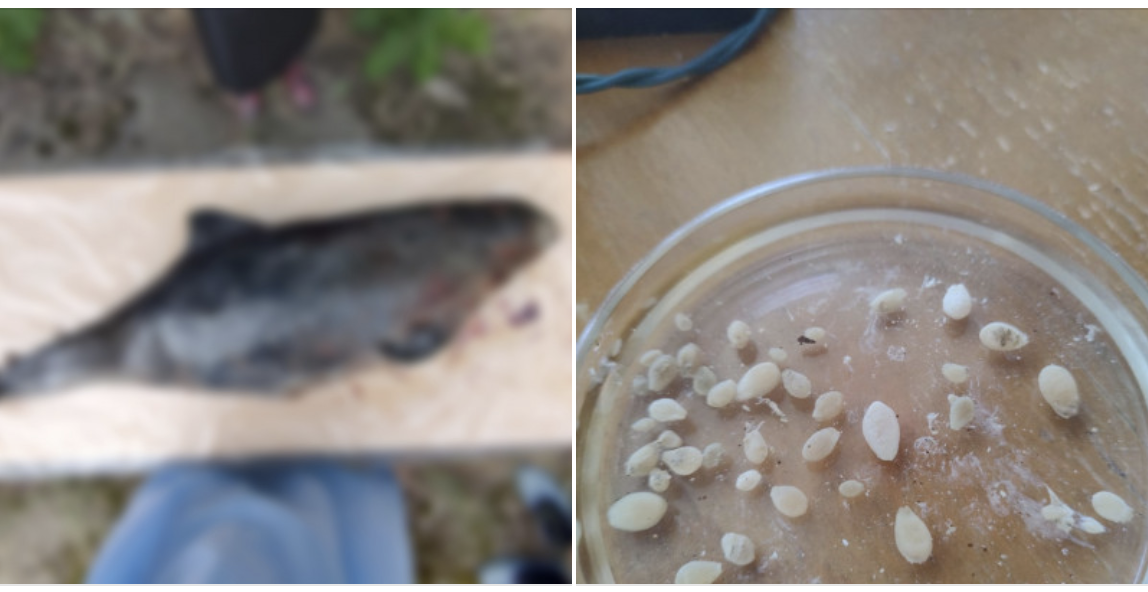
A porpoise found on the coast near Odessa had grains in its stomach. This photo is from the Facebook page of the Ukrainian Scientific Center for Marine Ecology.
Two weeks after the Kakhovka disaster, a total of four deceased dolphins were discovered on the shores of Odesa and Kherson regions. During the autopsy of one of the porpoises, fish and seeds were found in its stomach, which is not typical for dolphins to consume. Similar to forensic investigators, a team of scientists is systematically uncovering the final days of the porpoise's life.
"The current theory is that certain fish consumed the seed, and then the dolphin ate those fish. Dr. Halyna Pashkevych, a renowned Ukrainian archaeobotanist, conducted an analysis and reached some conclusions: the seeds belong to common land plants and have no connection to the sea. Ongoing studies, including genetic and morphological analyses, are being conducted to identify the species of fish found in the stomach. However, we can tentatively state that some of these fish were from freshwater sources, likely from the lower Dnipro area," Pavlo Holdin says.
The actual cause of the dolphin's death will need to be determined. Following each autopsy, Ukraine sends samples to experts at the University of Padua in Italy and the University of Hannover in Germany for additional analysis. Some assessments are also being carried out in Ukraine, but the findings have yet to be officially disclosed.
What is the solution?
To make a real impact on cleaning the sea, we must first focus on prevention. Once contamination has taken place, it's irreversible. But the bright side is that the sea is a resilient ecosystem that can heal itself.
Currently, the Institute of Marine Biology at the National Academy of Sciences of Ukraine is conducting research in the Odesa Bay on behalf of the Prosecutor General's Office. Although there are no definitive results yet, there have been some preliminary observations that we will discuss later.
Water blooming has come and gone
According to Halyna Minicheva, the director of the Institute of Marine Biology of the National Academy of Sciences of Ukraine and a corresponding member of the National Academy of Sciences of Ukraine, the blooming of water is what will ultimately cleanse the sea of certain pollutants.
"The absorption, transformation, and burial of substances can now only occur in the marine layer. Strangely enough, this process will be aided by the current algal bloom," she explained less than two weeks after the disaster. "As it happens more intensively, the algae will quickly and overwhelmingly consume the organic material that nourishes bacteria, including harmful ones. In this scenario, it's important to stay patient and thankful to the sea, which will carry much of the burden caused by this immoral tragedy."
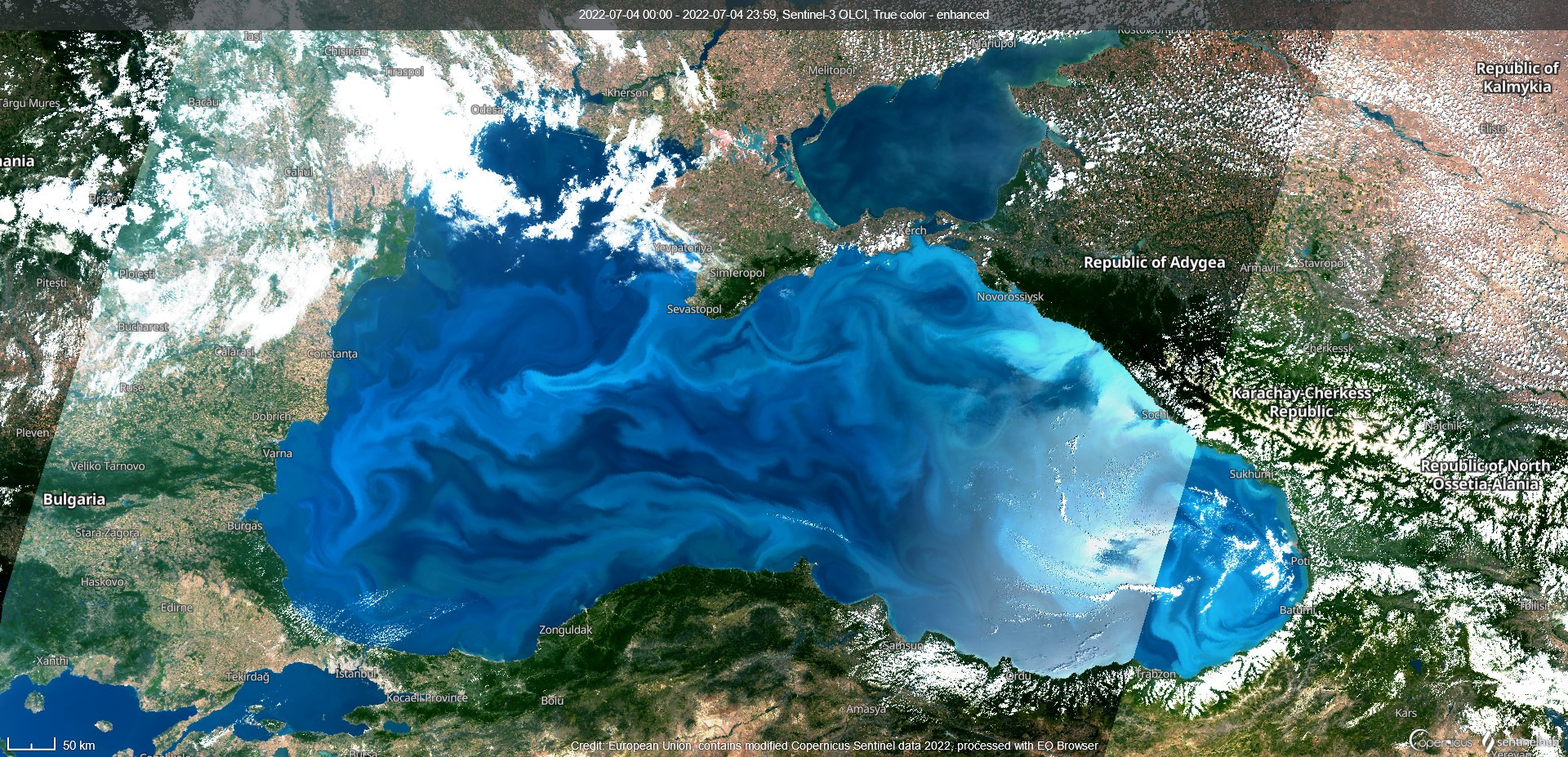
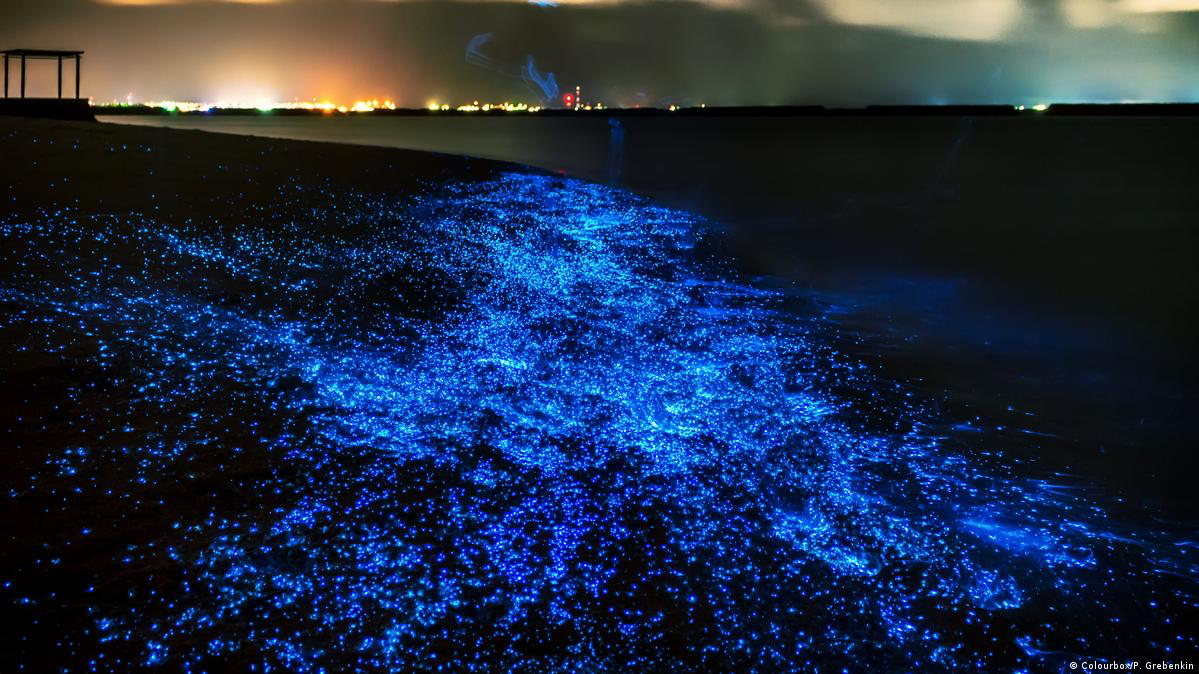
During the summer of 2022, bioluminescent phytoplankton in the Black Sea were observed from space and up close (exact time unspecified). Around 150 different types of phytoplankton were recorded in total. The first photo was captured by Sentinel-3 OLCI, showing an enhanced True Color RGB image, while DW took the second photo.
Marine biologist Maria Pavlovska reports that the blooming season has both started and ended and this occurrence was entirely natural:
"Due to organic pollution, there was a significant growth of phytoplankton. As it dies and decomposes, the water's oxygen levels decrease, which negatively affects marine life that relies on it. However, we can now confirm that all the organic matter has been consumed, the bloom has ceased, and it is no longer visible," the scientist reports.
Miracles with dolphins
According to Pavlo Holdin, as of September 4, 2023, the total number of dead dolphins that washed ashore in Ukraine, including Crimea, was 31. This is a decrease from last year, when, on the same date, 110 dolphins were found dead.
The indicators of 2022 and 2023 were compared with the average for 2018-2021, and it was found that this year, dolphins were washed ashore significantly less than the average. In contrast to 2022, considerably more dolphins were washing ashore than compared to the same period between 2018 and 2021.
"We're not going into the reasons for this just yet. We'll observe and draw conclusions later on," Holdin says.
"In the sea, there is always a struggle "for a place under the sun," or in our case – for a place at the bottom"
After the Kakhovka disaster, the wind pushed the freshwater toward the shore, and because the breakwaters prevented it from escaping, it stayed close to the coast for roughly ten days.
Mussels have always been plentiful along the coast of Odesa, as they are well adapted to environments with alternating salinity levels. This allows them to thrive near river mouths. They require a minimum salinity of 5 ppm; if conditions become too challenging, they can shut themselves off and remain isolated for up to a week and a half. If the desalination period is shorter, the mussels can survive; however, if it lasts longer, they will perish. According to Oleksandr Kurakin, a scuba diver at the Institute of Marine Biology, after the Kakhovka disaster, the conditions were somewhere in between.
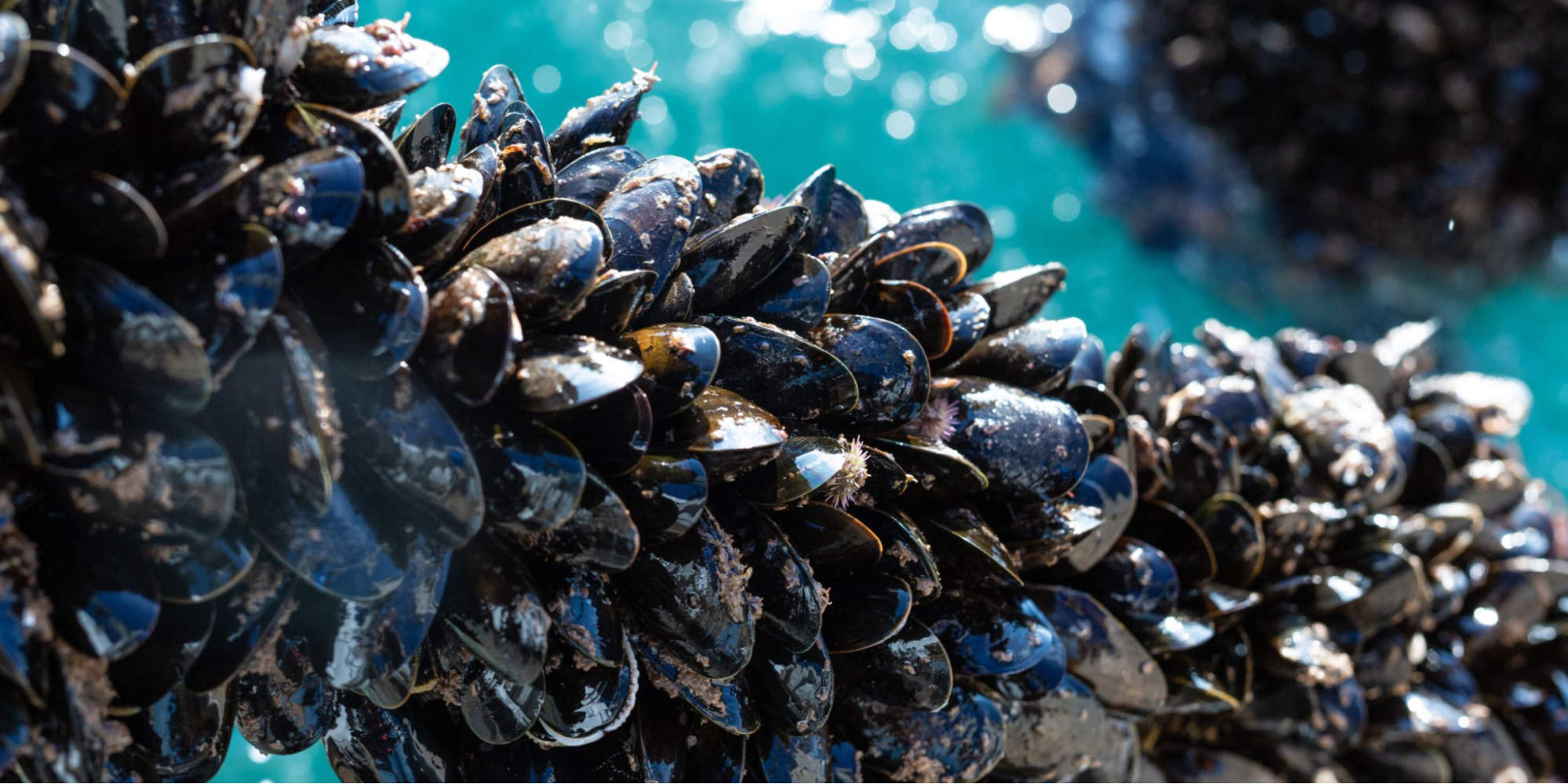
Mussels can cling to various underwater surfaces, thriving, eating, and expanding in size. They are commonly cultivated on a large scale in numerous countries across the globe. Photo: ASC International.
"Although not all mussels perished, the older ones could not survive the devastating events. Fortunately, the young population was largely unscathed. As in nature, in the sea, there is always a struggle "for a place under the sun," or in our case – for a place at the bottom. Currently, the areas where the older mussels died have been taken over by young individuals who are flourishing," the scientist explains.
However, it is still prohibited to consume them. These organisms have an incredible capacity to absorb all substances in the water, as their primary role is cleaning it. Therefore, if you wish to avoid an accumulation of heavy metals in your body, it is advisable to avoid eating mussels, rapana, and all fish from the Black Sea.
The fish have been rescued, and the number of crabs has increased
When desalination of the sea took place, there was a concern about the potential death of marine fish unable to adapt to the freshwater environment. This was a topic of discussion right after the Kakhovka accident, but there is now some good news.
Kurakin pointed out that, at times, there is a flow of fresh water from the side of the Dnipro-Buzka estuary that reaches the Odesa Bay. This causes a layer of about 3-4 meters of fresh water to cover the bay's surface. As a result, the fish swim down to the deeper parts, and the crabs move away.
"We did not see a massive die-off of fish. There were a few dead individuals, but not tens or hundreds of thousands as typically occurs during a die-off," the scientist explains.
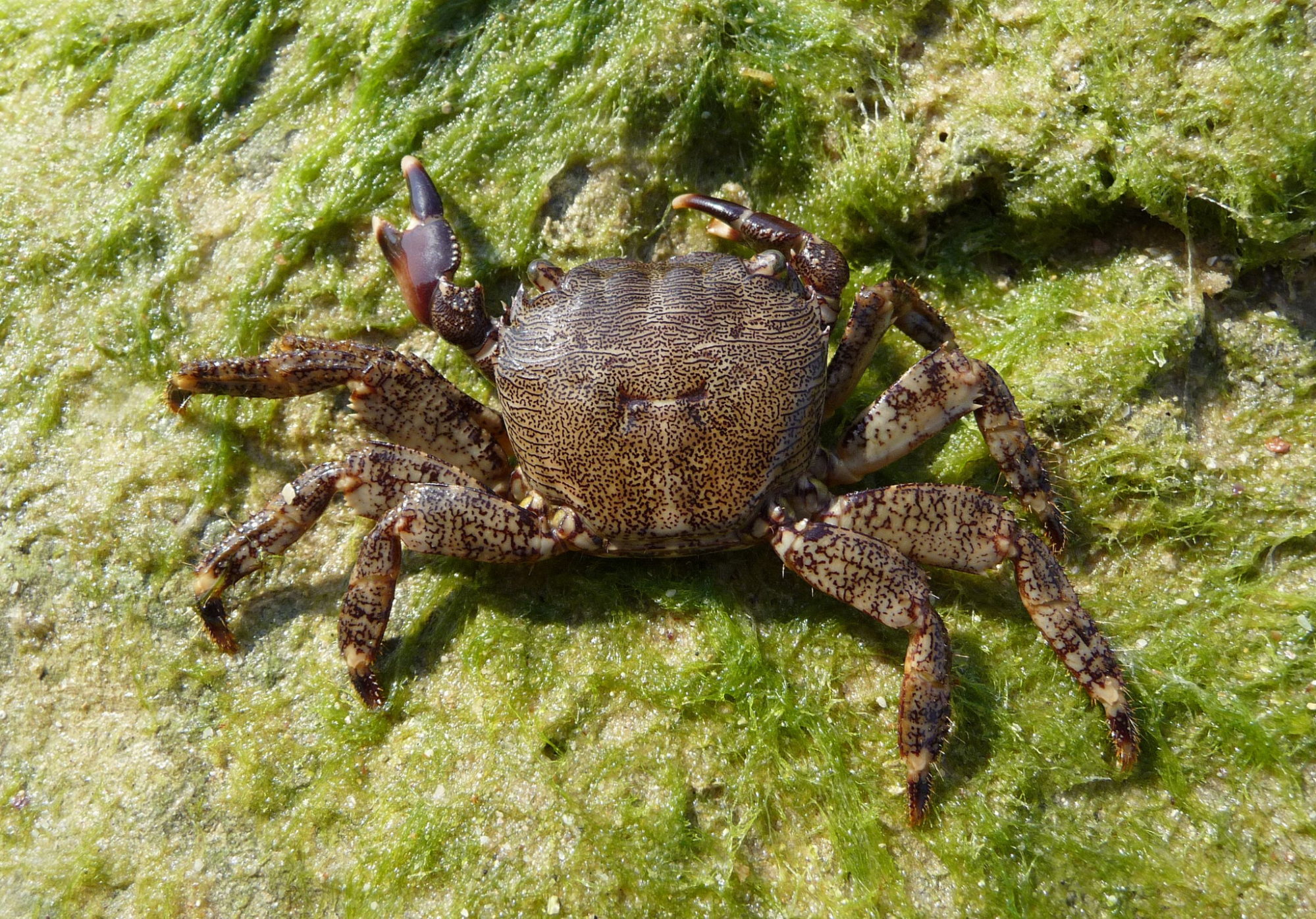
For nearly 30 years, the marble crab was scarcely seen in the Odesa Bay. However, there are now dozens and even hundreds of them. Photo: Wikipedia
During the 1970s and 1990s, there was a time when crabs were nearly absent from Odesa Bay. The abundance of crabs was greatly affected by the contamination of the rivers that run through the area from the Crimea to the Danube Delta. The influx of sewage, agricultural chemicals, and other wastes caused excessive growth of algae, which depleted the oxygen in the water, resulting in the death of all aquatic life.
"These die-offs occurred multiple times per year. It's difficult to fathom how the sea was able to endure this, but it demonstrates the resilience of the marine ecosystem and the adaptability of its organisms. Throughout millions of years, the sea has endured much and will surely withstand the Kakhovka disaster," Kurakin confidently states.
Right now, we can see with our own eyes that this thesis is being proved true as the sea regenerates itself. According to the scientist, the population of marble crabs, which had nearly vanished 30 years ago, has now revived.
"When the Kakhovka HPP exploded, we dived into the water and were immediately met with many tiny marble crabs. With each subsequent dive, their numbers seemed to increase exponentially."
And we've heard that these crabs are doing really well.
The sea is recovering
At present, the Black Sea is facing a higher level of human impact as a result of military activities. This includes the transportation of fuel and oil, as well as noise pollution, which can cause harm to marine mammals through echo injuries. Nevertheless, Maria Pavlovska notes that researchers are reporting signs of recovery in the Black Sea after the Kakhovka disaster.
Following the disaster, many organic materials and various chemical and toxic substances seeped into the Black Sea, eventually settling on the ocean floor. While the organic matter is known to be digestible, the situation is more complex with mercury and heavy metals, as they can build up in marine organisms. Nevertheless, Pavlovska notes that precise figures are currently unavailable, as extensive research capturing various forms of marine life cannot be conducted by scientists at this time.
"We are currently choosing analyses, but this is not the appropriate level of monitoring," the scientist states. "We will conduct comprehensive research after the end of hostilities."
Ultimately, Maria Pavlovska affirmed that the Black Sea can still "digest" all the waste from the Kakhovka disaster. However, it may take longer to get rid of certain harmful pollutants.
The project, titled "Rebuilding Southern Ukraine following the demolition of Kakhov reservoir," was developed in collaboration with CFI, the French Development Agency for Media, as part of the Hub Bucharest initiative, backed by the French Ministry of Foreign Affairs.







